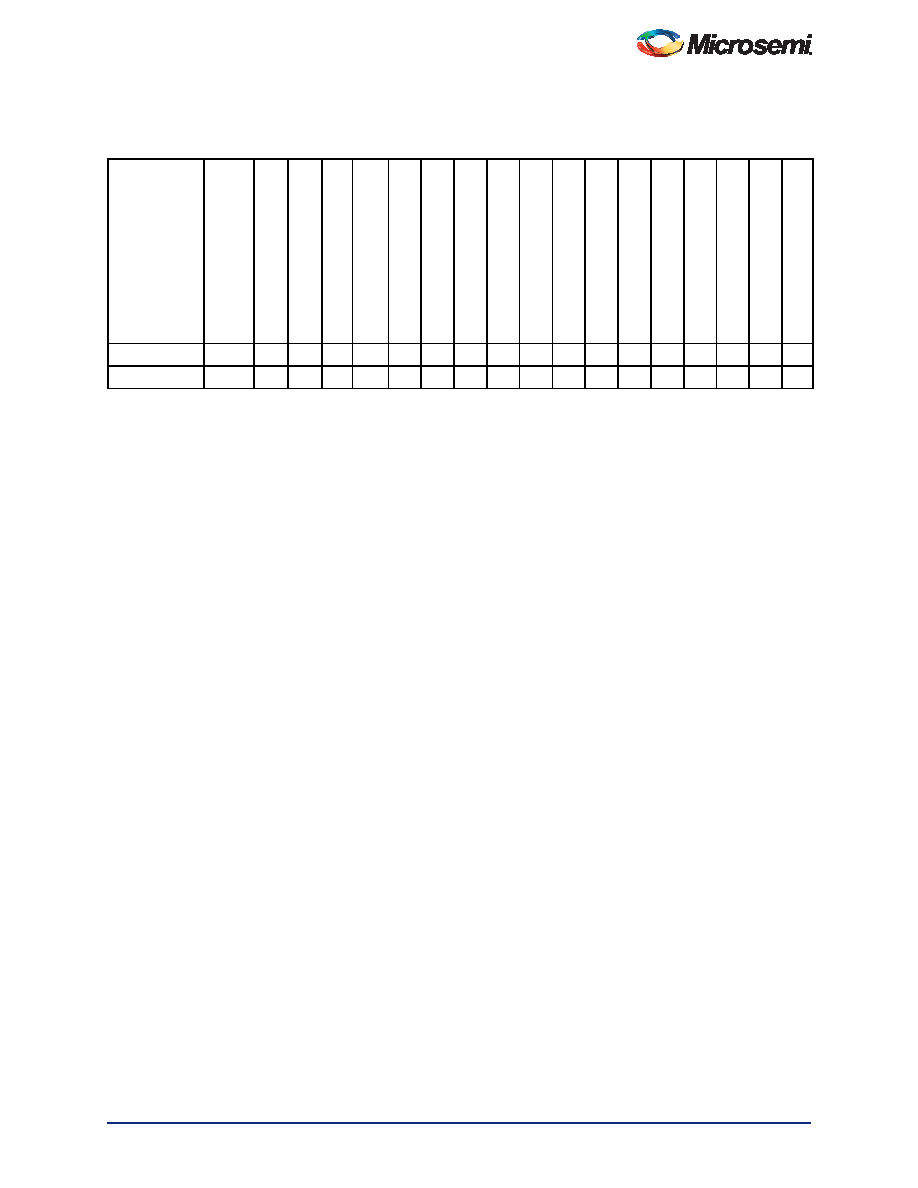- 您現(xiàn)在的位置:買賣IC網(wǎng) > PDF目錄4339 > M1AGLE3000V2-FGG896I (Microsemi SoC)IC FPGA 1KB FLASH 3M 896-FBGA PDF資料下載
參數(shù)資料
| 型號: | M1AGLE3000V2-FGG896I |
| 廠商: | Microsemi SoC |
| 文件頁數(shù): | 103/166頁 |
| 文件大小: | 0K |
| 描述: | IC FPGA 1KB FLASH 3M 896-FBGA |
| 標準包裝: | 27 |
| 系列: | IGLOOe |
| 邏輯元件/單元數(shù): | 75264 |
| RAM 位總計: | 516096 |
| 輸入/輸出數(shù): | 620 |
| 門數(shù): | 3000000 |
| 電源電壓: | 1.14 V ~ 1.575 V |
| 安裝類型: | 表面貼裝 |
| 工作溫度: | -40°C ~ 85°C |
| 封裝/外殼: | 896-BGA |
| 供應(yīng)商設(shè)備封裝: | 896-FBGA(31x31) |
第1頁第2頁第3頁第4頁第5頁第6頁第7頁第8頁第9頁第10頁第11頁第12頁第13頁第14頁第15頁第16頁第17頁第18頁第19頁第20頁第21頁第22頁第23頁第24頁第25頁第26頁第27頁第28頁第29頁第30頁第31頁第32頁第33頁第34頁第35頁第36頁第37頁第38頁第39頁第40頁第41頁第42頁第43頁第44頁第45頁第46頁第47頁第48頁第49頁第50頁第51頁第52頁第53頁第54頁第55頁第56頁第57頁第58頁第59頁第60頁第61頁第62頁第63頁第64頁第65頁第66頁第67頁第68頁第69頁第70頁第71頁第72頁第73頁第74頁第75頁第76頁第77頁第78頁第79頁第80頁第81頁第82頁第83頁第84頁第85頁第86頁第87頁第88頁第89頁第90頁第91頁第92頁第93頁第94頁第95頁第96頁第97頁第98頁第99頁第100頁第101頁第102頁當前第103頁第104頁第105頁第106頁第107頁第108頁第109頁第110頁第111頁第112頁第113頁第114頁第115頁第116頁第117頁第118頁第119頁第120頁第121頁第122頁第123頁第124頁第125頁第126頁第127頁第128頁第129頁第130頁第131頁第132頁第133頁第134頁第135頁第136頁第137頁第138頁第139頁第140頁第141頁第142頁第143頁第144頁第145頁第146頁第147頁第148頁第149頁第150頁第151頁第152頁第153頁第154頁第155頁第156頁第157頁第158頁第159頁第160頁第161頁第162頁第163頁第164頁第165頁第166頁

IGLOOe Low Power Flash FPGAs
Revision 13
2-27
LVDS
24
–
High
–
1.55 2.26 0.25 1.95
–
––
–
ns
LVPECL
24
–
High
–
1.55 2.17 0.25 1.70
–
––
–
ns
Table 2-26 Summary of I/O Timing Characteristics—Software Default Settings (continued)
Std. Speed Grade, Commercial-Case Conditions: TJ = 70°C, Worst-Case VCC = 1.14 V,
Worst-Case VCCI (per standard)
I/O Standard
Drive
S
trength
(mA)
Eq
uivalen
tSo
ft
ware
De
fault
Drive
S
trength
Option
1 (mA)
Slew
Rat
e
Ca
p
acitive
Lo
ad
(p
F)
Ex
te
rn
al
R
esi
st
or
(
)
t DO
UT
(ns)
t DP
(ns)
t DI
N
(ns)
t PY
(ns)
t PYS
(ns)
t EOUT
(ns)
t ZL
(ns)
t ZH
(ns)
t LZ
(ns)
t HZ
(ns)
t ZLS
(ns)
t ZH
S
(ns)
Unit
s
Notes:
1. The minimum drive strength for any LVCMOS 1.2 V or LVCMOS 3.3 V software configuration when run in wide range is
±100 A. Drive strength displayed in the software is supported for normal range only. For a detailed I/V curve, refer to the
IBIS models.
2. All LVCMOS 3.3 V software macros support LVCMOS 3.3 V wide range as specified in the JESD8-B specification.
3. All LVCMOS 1.2 V software macros support LVCMOS 1.2 V wide range as specified in the JESD8-12 specification.
4. Resistance is used to measure I/O propagation delays as defined in PCI specifications. See Figure 2-12 on page 2-49 for
connectivity. This resistor is not required during normal operation.
5. Output drive strength is below JEDEC specification.
6. For specific junction temperature and voltage supply levels, refer to Table 2-7 on page 2-6 for derating values.
相關(guān)PDF資料 |
PDF描述 |
|---|---|
| 24LC024T-I/SN | IC EEPROM 2KBIT 400KHZ 8SOIC |
| APA1000-PQG208I | IC FPGA PROASIC+ 1M 208-PQFP |
| 24LC024-I/SN | IC EEPROM 2KBIT 400KHZ 8SOIC |
| APA1000-PQ208I | IC FPGA PROASIC+ 1M 208-PQFP |
| 24C02CT/SN | IC EEPROM 2KBIT 400KHZ 8SOIC |
相關(guān)代理商/技術(shù)參數(shù) |
參數(shù)描述 |
|---|---|
| M1AGLE3000V2-FGG896PP | 制造商:ACTEL 制造商全稱:Actel Corporation 功能描述:IGLOOe Low-Power Flash FPGAs with Flash Freeze Technology |
| M1AGLE3000V5-FFG484 | 制造商:Microsemi Corporation 功能描述:FPGA IGLOOE 3M GATES 130NM 1.5V 484FBGA - Trays |
| M1AGLE3000V5-FFG896 | 制造商:Microsemi Corporation 功能描述:FPGA IGLOOE 3M GATES 130NM 1.5V 896FBGA - Trays |
| M1AGLE3000V5-FFG896ES | 制造商:ACTEL 制造商全稱:Actel Corporation 功能描述:IGLOOe Low-Power Flash FPGAs with Flash Freeze Technology |
| M1AGLE3000V5-FFG896I | 制造商:ACTEL 制造商全稱:Actel Corporation 功能描述:IGLOOe Low-Power Flash FPGAs with Flash Freeze Technology |
發(fā)布緊急采購,3分鐘左右您將得到回復(fù)。